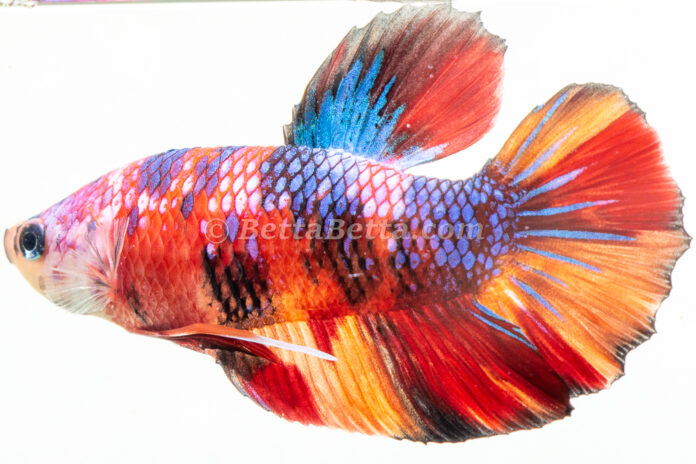Guide to owning and caring for bettas
The “Siamese Fighting Fish” is also more commonly known as “Betta Fish”, extremely popular, and amazingly beautiful. It is a relatively inexpensive pet to keep. Keeping your fish is a relatively simple and easy household pet to look after and maintain.
However, to keep a happy fish, you must do specific things to ensure its survival and to keep it safe, comfortable, and healthy. Here are some things you need to do before you buy a pet betta. First of all, did you know that the betta’s official name is “Betta Splendens”? In the wild (and, its original and natural environment) the fish is somewhat drab-looking and does not tend to display the more vivid and brighter colors that we see today in most pet stores. This fish usually has much shorter fins than they do in captivity.
Keep Your Fish In a Large Tank
These fish mainly live and survive in hot, oftentimes very humid rice paddies of central Asia. They are among a small group of fish that have developed an ingenious way to breathe oxygen straight from the air by using a lung-like incredible “labyrinth” like an organ.
It allows them to survive in the smallest amount of water even when there is a bad drought which dramatically affects most rice paddies where they normally live. By using this very unique way of breathing these fish can live and survive in murky and muddy small water holes until the tropical rains return. It’s not really nice to keep betta fish in smaller glass or plastic containers.
Why? Because although they can survive harsh living conditions in their natural environment, their survival ability in the wild was developed more as a means of survival not one that they chose.
It’s a much nicer thing to do for betta fish care is to keep your pet fish in a container or tank that holds about two and a half gallons of water. It isn’t really necessary for you to keep your fish in a large tank which holds ten gallons or more, but it is more humane and will guarantee a much better survival rate for these type of fish. A much larger fish tank will “ensure better care”, along with providing a fun way of displaying your much-prized pet. Also, adding the right plants will give your tank a nicer look, and make your pet fish happier in its environment.
Never Put 2 Males In The Same Bowl
Keep in mind that these fish originally came from a warmer climate and they do not enjoy being housed or contained in a cold-water climate. Generally, they will consider a homeroom environment much too cold. With this in mind, you should buy an aquarium thermometer from your local pet shop. This way it will ensure better care and a happier and healthier fish. An inexpensive stick-on type thermometer will do nicely.
You may also wish to consider placing a special heater in your tank and/or in your bowl. Perhaps even sourcing a warm area of your home to place your fish tank or bowl. Sitepoint: Most bettas will lie lifeless and appear in a frozen state or even in a huddle near the bottom of the tank when the water temperature is too cold. These fish mostly enjoy water temperature around the 70-degree mark.
Interestingly, they are commonly referred to as “Samurai Fighting Fish” mainly due to the fact that male Betta will almost always attack each other and even fight to the death in some cases.
Long Beautiful Fins
For betta fish care you should never put two males in the same tank or bowl. It’s also not a good idea to place a female fish either in with your male. In many cases, the male will even attack the female too or continually annoy her.
Another very important thing to remember is they should not be placed in community tropical tanks. Why not? Because almost always other fish will nip at their long “beautiful fins” and even injure the fish itself.
If you want to add a companion fish along with your Beta see our betta fish with another fish article to find out which species will coexist with your pet fish peacefully before you go ahead and place the other fish in the tank or bowl. Check that there should be no type of discoloration, body tears, or “noticeable holes” when its fins are fully extended.
Check For No Type Of Discoloration
Sometimes it can be hard to check properly because the tiny plastice bag used by pet stores makes it hard for a Halfmoon, Crowntail and Splenden to extend its fins. Nevertheless, fins can get broken or torn because they are mostly kept for long periods of time in jars usually too small for there needs. When it swims about their protruding fins can brush-up against the container walls and can break. You should look carefully at the gills that they look smooth and flat in appearance with no signs of splitting and peeling. Make sure there’s no unsightly lumps or body discoloration.
Never Overfeed Your Fish
You should never overfeed your fish. It really only requires about three to four tiny grains of fish food every day. It’s probably best if you feed your betta fish 1 grain of fish food at a time, and at least two to three times a day.
The stomach of a fish is about the size of their tiny eyeball. Giving your pet too much food will only make its stomach swell and cause it bloating pains, fish constipation, and even a more serious swim bladder problem which oftentimes can even end up killing the fish. You should only feed your fish small portions of food especially if you’re not sure as to the size and quantity of fish food you should feed it. In conclusion, these fish are extremely beautiful, vibrant, and very interesting fish to watch and own. You will soon discover that they are intelligent and oftentimes will quickly learn who their owner and caregiver are. These little fish tend to get really excited when you approach the tank and bowl as they know you are the one that feeds and looks after them. If you really strive for betta fish care then your pet fish will reward you with years of fun and pleasure.


